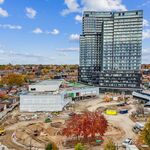nfitz
Superstar
Yikes - that poll is so over-the-top biased that even a Toronto Sun reader might notice it.
I suspect that many of the respondents don't even realize that an underground line costs more than a line in street median.
If the question contained a fair description of alternatives - either a fully underground line and nothing else, or a subway-surface option plus $2 billion for other corridors - something tells me that the second option would win with a large margin.
I suspect that many of the respondents don't even realize that an underground line costs more than a line in street median.
If the question contained a fair description of alternatives - either a fully underground line and nothing else, or a subway-surface option plus $2 billion for other corridors - something tells me that the second option would win with a large margin.
I feel that light rail is a low-speed, low capacity technology that is not suitable for anything other than minor feeder lines like St. Clair. There needs to be at least one continuous, grade separated (can be elevated in parts) rail line running across the entire north side of the city to provide a real alternative to driving on Highway 401.
If St. Clair is a "minor feeder" then so is Sheppard (both halves).
I think the question is framed wrong, and I think this whole debate is wrong.
Eglinton underground all the way is wrong.
Eglinton as per Transit City is wrong.
Central portion underground is fine. But having it at-grade in the street on the east side is wrong. It should be either (a) in a ditch or (b) elevated or (c) duck under intersections.
It bothers me that the option that gives the best bang for the buck is ignored.
And that. Is why we fail.
I feel that light rail is a low-speed, low capacity technology that is not suitable for anything other than minor feeder lines like St. Clair. There needs to be at least one continuous, grade separated (can be elevated in parts) rail line running across the entire north side of the city to provide a real alternative to driving on Highway 401.
1) The average speed of the mixed surface-subway Eglinton line will be only slightly worse than that of a fully underground line.
2) Eglinton cannot be an alternative to 401 for a number of reasons, one of them is that it is located too far south of 401.
3) Capacity of Eglinton is a valid concern, but it won't be improved much if the line is placed fully underground but still uses same 3-car LRT trains. We would have to build a fully-fledged subway to maximize capacity, but such a change is too risky at this stage of the project. It is better to complete Eglinton LRT now, and extend the Sheppard subway in the long term (when much more E-W capacity is needed).
Due to the large number of minor stops under the Transit City proposal, and because traffic signal priority is not all that effective, and because a transfer at Kennedy/Eglinton will likely be needed, the Transit City proposal would probably add 10 minutes for travelling through the east section, and if extended to the airport 5 minutes in the western section.
If the Eglinton line were to be extended to the airport it would meet Highway 401 twice, at 401/427 and at Scarborough Centre. Although Eglinton is some distance south of the 401 it will still act to some extent as a 401 reliever. Since St. Clair is very congested, Eglinton is very congested, Lawrence has a gap east of Bayview and York Mills/Wilson can be quite congested, drivers going long distances usually take the 401, even though the 401 is also heavily congested.
The main thing that decreases capacity is the lack of grade separation. Without grade separation one can only run 4-5 minute headways with full signal priority, otherwise signal priority severely interrupts traffic on north south cross streets, and needs to be turned off making the line slower. With full grade separation and automation one can run as low as 90 second headways, making up for the fact that the trains are slightly shorter than Bloor-Danforth.
Giambrone definitely had no interest in that. I wonder if Ford would ever accept it as a compromise if he didn't have the votes.Central portion underground is fine. But having it at-grade in the street on the east side is wrong. It should be either (a) in a ditch or (b) elevated or (c) duck under intersections.
Giambrone definitely had no interest in that. I wonder if Ford would ever accept it as a compromise if he didn't have the votes.




